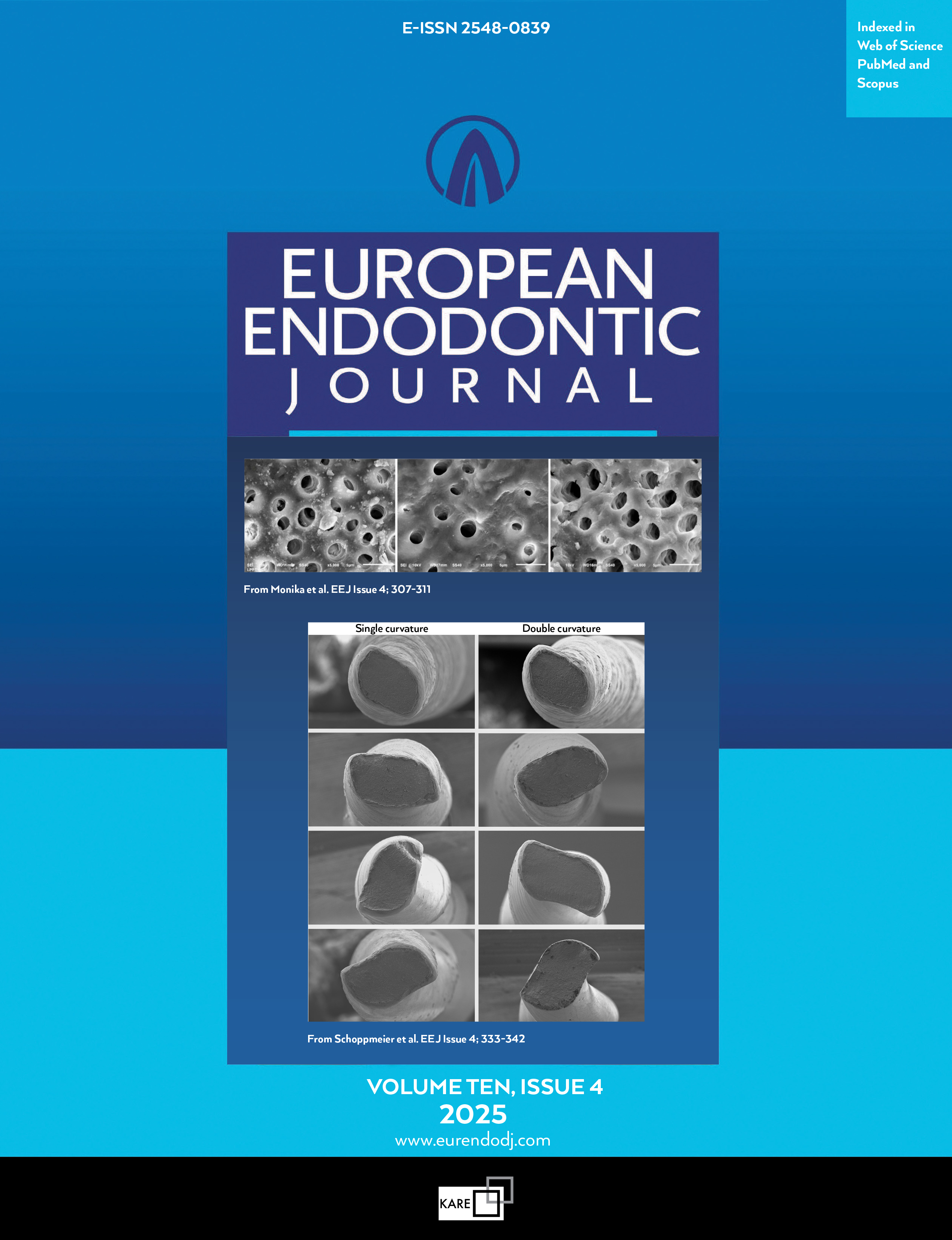Metrics
2024 IMPACT FACTOR
5 year Impact Factor
Eigenfactor Score
2024 CiteScore
Journal Citation Reports
(Clarivate 2025, JIF Rank)
Effect of Rotary and Reciprocating Instrumentation Motions on Postoperative Pain Incidence in Non-Surgical Endodontic Treatments: A Systematic Review and Meta-Analysis
Behnam Rahbani Nobar1, Omid Dianat2, Behrad Rahbani Nobar3, Armin Shirvani3, Nazanin Zargar4, Majid Kazem4, Patricia Tordik21Department of Endodontics, School of Dentistry, Alborz University of Medical Sciences, Karaj, Iran2Division of Endodontics, Department of Advanced Oral Sciences and Therapeutics, University of Maryland Faculty of Dentistry, Baltimore, Maryland
3Iranian Center for Endodontic Research, Research Institute of Dental Sciences, Shahid Beheshti University of Medical Sciences
4Department of Endodontics, School of Dentistry, Shahid Beheshti University of Medical Sciences
Objective: A systematic review and meta-analysis were conducted to determine whether there are postoperative pain differences resulting from rotary and reciprocation engine-driven instrumentation motions in non-surgical endodontic treatment or retreatment at 12, 24, and 48 hours.
Methods: Four electronic databases (PubMed, Embase, Cochrane Library, and Scopus) were searched to identify randomised controlled trials that compared the effects of rotary and reciprocating instrumentation motions on postoperative pain. Two authors independently screened the search results, extracted the data, and assessed the quality using the Cochrane risk of bias tool. Due to numerous variables across studies, the random effect inverse variance method for meta-analysis was applied. When significant heterogeneity among studies was present, the random effects multi-variable meta-regression analysis was performed to determine the source of heterogeneity.
Results: At all time intervals, the incidence of postoperative pain was higher in the reciprocating instrumentation group, but was not statistically significant. There was no significant difference in the analgesic intake between groups. Meta-regression analysis determined study population sizes as a significant heterogeneous factor, while significance was not observed for preoperative pain or the pulpal diagnosis.
Conclusion: There was no difference in postoperative pain at 12, 24, and 48 hours after non-surgical root canal treatment and retreatment, using reciprocating or rotary instrumentation motions. (EEJ-2020-07-173)
Manuscript Language: English
(1186 downloaded)


